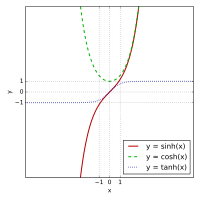Tanhc function

Okay kiddo, imagine you have a toy car that can only go forwards and backwards, but can never go sideways. Now suppose you have a friend who wants to help you turn your toy car around so it’s facing the opposite direction. How can they do that?
That’s kind of like what the tanhc function does, just with numbers instead of a toy car. It helps us turn our numbers around so they’re going in the opposite direction.
But how does it work? Well, first we need to talk about something called the “hyperbolic tangent” or tanh for short. This is a fancy kind of math function that takes in a number and spits out another number. For example, if we put in the number 0, it gives us the number 0. If we put in the number 1, it gives us the number 0.761594. And if we put in -1, it gives us the number -0.761594.
This might seem a little strange, but the important thing to remember is that the tanh function always gives us a number between -1 and 1. And it’s also curved, not straight like our toy car can only go. This means we can turn our numbers around in a more gradual way than just switching directions all at once.
Now, let’s talk about the “tanhc” function. This is just a variation of the tanh function that’s been tweaked a little bit. Instead of going from -1 to 1, it goes from 0 to 1. And instead of being perfectly symmetrical (like a mirror image), it’s a little lopsided.
What that means is that when we use the tanhc function on our numbers, we’re not just turning them around, we’re also pushing them up or down a little bit. This can be really useful in math and science when we want to make our numbers fit into a certain range or to help us visualize data in a graph.
So in summary, the tanhc function is kind of like a toy car that turns our numbers around, but instead of just going straight backwards, it also pushes them up or down a little bit depending on which way they’re going. It helps us make our numbers fit into a specific range and can be really helpful in math and science.
That’s kind of like what the tanhc function does, just with numbers instead of a toy car. It helps us turn our numbers around so they’re going in the opposite direction.
But how does it work? Well, first we need to talk about something called the “hyperbolic tangent” or tanh for short. This is a fancy kind of math function that takes in a number and spits out another number. For example, if we put in the number 0, it gives us the number 0. If we put in the number 1, it gives us the number 0.761594. And if we put in -1, it gives us the number -0.761594.
This might seem a little strange, but the important thing to remember is that the tanh function always gives us a number between -1 and 1. And it’s also curved, not straight like our toy car can only go. This means we can turn our numbers around in a more gradual way than just switching directions all at once.
Now, let’s talk about the “tanhc” function. This is just a variation of the tanh function that’s been tweaked a little bit. Instead of going from -1 to 1, it goes from 0 to 1. And instead of being perfectly symmetrical (like a mirror image), it’s a little lopsided.
What that means is that when we use the tanhc function on our numbers, we’re not just turning them around, we’re also pushing them up or down a little bit. This can be really useful in math and science when we want to make our numbers fit into a certain range or to help us visualize data in a graph.
So in summary, the tanhc function is kind of like a toy car that turns our numbers around, but instead of just going straight backwards, it also pushes them up or down a little bit depending on which way they’re going. It helps us make our numbers fit into a specific range and can be really helpful in math and science.
Related topics others have asked about:
